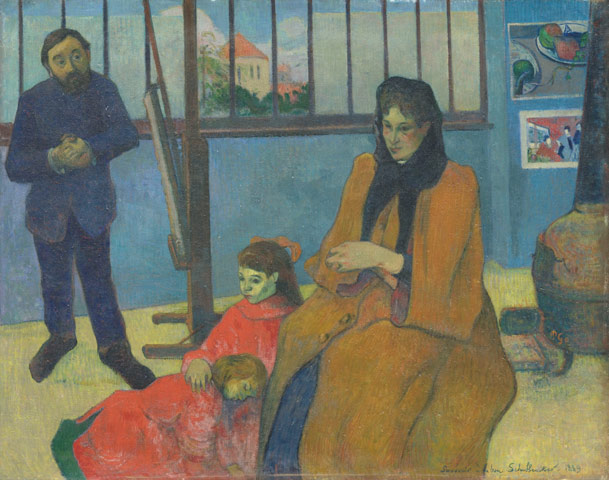Fr : version française / En: english version
mheu, Historical Museum of the Urban Environment
The Schuffenecker Family
Paul Gauguin

1889
oil on canvas
92cm x 73cm
Paris, Musée d'Orsay
© RMN / Hervé Lewandowski
View this work in the exhibition Fire
The work
Gauguin chose his friend Schuffenecker as his model here. The two men met in 1872 when they were working for the same broker. They decided to embark on a career in art together. Schuffenecker, a minor painter, loyally supported Gauguin until their rift in the 1890s. He played a key role in the development of the Pont-Aven School, organizing the group's first exhibit, and was among the first Vincent Van Gogh collectors.
The artist
Born in Paris in 1848, the grandson of Flora Tristan spent his early childhood in Latin America before returning to France. In 1873, after having traveled extensively as a sailor for a few years, then working as a stockbroker, he began teaching himself painting and sculpture, deserting his family whom he could no longer support. In Pont-Aven he discovered Cloisonnism with its bold flat forms, and symbolism. His stay in Arles with Van Gogh, whom he admired greatly, left a lasting impression on him. Shortly afterwards Gauguin left for Tahiti. Enchanted by Polynesian culture, he painted pictures bursting with energy and color that prefigured Fauvism's explosion of light. However, soon weighed down by worries, poverty and solitude, he fled to the Marquesas Islands. Far from the new Eden he hoped to find there, he learned about the tragic fate of its indigenous people and was a champion of their cause. He died there in 1903.